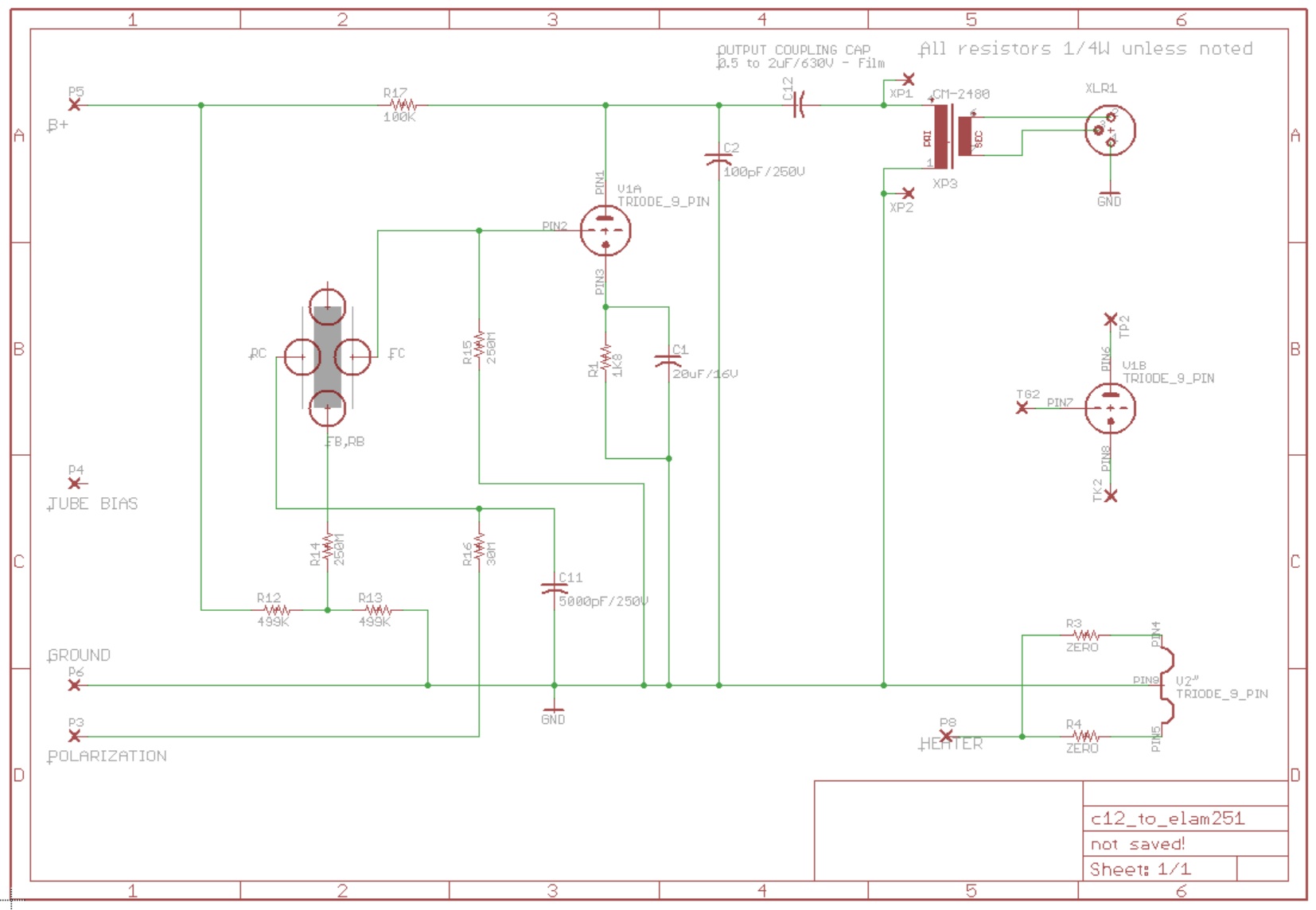Matador
Well-known member
jrmintz said:It works great! I can't tell from my own voice if it sounds like any of the good 251s I've used, but it certainly has a nice tone. That's saying a lot with my voice. I have some good singers in next week to try it out on.
I realize now why I was having the spitting and hissing problem - I hadn't removed the direct wire from cathode to ground before adding the 20uF cap and 1.82k resistor. So I was running them in parallel. I finally grasped that after staring at the schemos long enough.
Anyway, thanks Matador, thanks 'Chung, thanks Jess for your schemo.
Awesome!
I added a much clearer schematic into the official C12 thread. I'll link to it here for completeness:

Like I said in the other thread, if you don't want pattern switching and just want to make the mike cardioid only, you can also remove R16 and C11 and just let the RC connection float (like a U47).

































